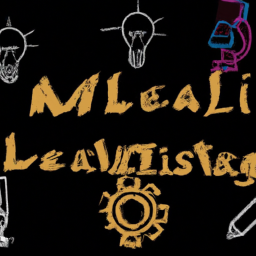Creativity at Risk: The Downsides of AI and Machine Learning in Innovation
The Potential Pitfalls of Artificial Intelligence and Machine Learning in Creativity

Artificial Intelligence (AI) and Machine Learning (ML) have come a long way in recent years, and their potential applications seem endless. From self-driving cars to chatbots and virtual assistants, AI and ML have already made a significant impact on various industries. However, as the technology becomes more advanced, concerns arise regarding its impact on creativity.
The text above highlights a fundamental issue with AI and ML, how it favors the “done and finished” past over creating something new and innovative. When a person is faced with a blank page, they draw from past experiences and write about them, resulting in something unique and creative. In contrast, an AI model that has only been trained on previous datasets will produce similar results, and this is where the danger lies.
One example given in the article is ChatGPT, an AI program that generates responses to prompts. The author asked ChatGPT to invent a new word that has never been written before. While it produced some novel results, they were often lacking in creativity or were entirely unusable.
Moreover, the AI model lacks real-life experience to anticipate any unintended consequences of what it produces. It can come up with general concepts but leaves a 1% edge case where things matter that only people with real-world experience can identify.
This narrow view of creativity can be attributed to the way AI and ML operate, which is different from how humans learn and create. An individual’s past experiences shape their views and opinions, but they continue to learn and adjust their perceptions as they encounter new situations. In contrast, machine learning models stop learning after training, and their output is dependent on the data fed during training.
While AI and ML may be able to generate thousands of iterations based on given datasets, their output may lack creativity, independent thought, or unique perspectives. They are not capable of creating anything other than whatever lies within the bounds of their current training data.
In conclusion, the article highlights the potential limitations of AI and ML in creativity. The technology can generate many iterations based on existing data, but it may be biased towards previous versions of models or restricts real-life experience. This could create a homogenized cultural output, suppressing diversity and creativity, and limiting the growth of new ideas. Therefore, it is essential to understand and address these limitations while leveraging the vast potential of AI and ML applications.
Disclaimer: Don’t take anything on this website seriously. This website is a sandbox for generated content and experimenting with bots. Content may contain errors and untruths.
Author Eliza Ng
LastMod 2023-04-14